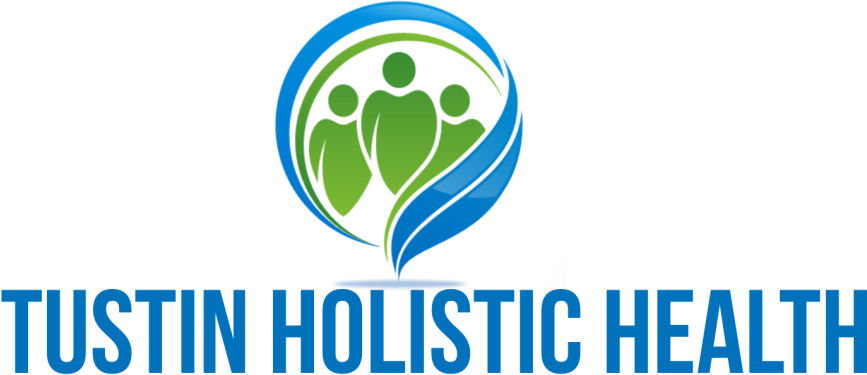Applied Kinesiology

Open Tuesday Wednesday & Fridays from 8:00am to 5:00pm | Closed for lunch 12:00pm to 2:00pm | Thursdays 2:00pm to 6:00pm
Your journey to wellness begins here, call today!
Applied Kinesiology
Applied Kinesiology can be divided into two distinct parts.
One is an aid to diagnosis. Muscle testing is used help diagnose what is functioning abnormally. This can be a problem with the nervous system, the lymphatic drainage, the vascular supply to a muscle or organ, a nutritional excess or deficiency, a problem with the cranial-sacral – TMJ mechanism, an imbalance in the meridian system or a host of other problems. Testing individual muscles in an accurate manner and determining what effects the relative strength of the muscle when combined with knowledge of the basic mechanics and physiological functioning of the body helps to more accurately diagnose what is going wrong.
The second part of Applied Kinesiology involves the treatment phase. Here, Dr. Goodheart and others in the International College of Applied Kinesiology have adapted different treatment methods to the problems that have been diagnosed. From nutrition to chiropractic manipulation to osteopathic cranial techniques to acupuncture – meridian therapies to myofascial techniques to nervous system coordination procedures to some of the latest theories in medicine involving control of the vascular and nervous system may be employed to balance the malfunction found in the patient.
Applied Kinesiology borrows from many different disciplines and through the use of accurate, scientific muscle testing, in addition to the basic knowledge of the practitioner, helps direct the care to exactly what the patient’s needs are instead of what the practitioner does.

How does Applied Kinesiology work?
Applied kinesiology looks at balance within your body’s triad of health – chemical, mental and structural factors – to understand and correct health problems. The triad is represented by an equilateral triangle with structural health as its base, and the upright sides representing chemical and mental health. Neurology forms the backbone of the triad, bringing it to life in 3 dimensions. When a person experiences pain, dysfunction, or poor health, it is due to a problem in one or more of these areas affecting the others. For example, low blood sugar may make someone cranky or a pinched nerve may cause muscle pain. Applied kinesiology helps the doctor evaluate the triad and direct therapy toward the imbalanced side or sides. An applied kinesiologist looks at the individual parts of the triad and the relationship among them to better understand why a health problem exists, how and where it began, and what the best way is to correct its causes instead of just covering up its symptoms. The triad of health is interactive and all sides must be evaluated for the underlying cause(s) of a problem.
Applied kinesiology uses muscle testing as a primary feedback mechanism to examine how a person’s body is functioning. In general, the applied kinesiologist finds a muscle that tests weak and then attempts to determine why that muscle is not functioning properly. In some cases, the examiner may test for environmental or food sensitivities by using a previously strong muscle to find what weakens it. At the hands of a skillful doctor, AK diagnosis can determine the best forms of treatment for the specific patient at that time. This is important because we are dynamic, living, growing creatures. Just as your needs may be different from someone else with similar symptoms, you may also have different needs at different times as your health changes. These therapies may include specific joint manipulation or mobilization, various myofascial therapies, cranial techniques, meridian therapy, clinical nutrition, dietary management and various reflex procedures. Since AK draws together the core elements of many complementary therapies and provides an interdisciplinary approach to health care, it is not surprising that around the world chiropractors, osteopaths, medical doctors, dentists, and in some places, acupuncturists and naturopaths are trained in and use Applied Kinesiology.
What comprises an examination using Applied Kinesiology?
The process begins with a detailed questioning of the patient to uncover clues as to what may be going on. Generally, problems can be related to chemical imbalances, structural imbalances or mental stress or any combination of the above. After this general examination procedures are used to assess the health of the patient. For example, changes in blood pressure from lying to sitting to standing can indicate imbalances in the body. This is followed with specific examination procedures used by the practitioner. For example, in a musculoskeletal problem, skin sensitivity, knee reflex or balancing can help to uncover problems. After these tests are performed, an evaluation of the strength of the muscles is performed. There are many causes of muscular weakness and different procedures may be used to uncover the cause. At the end of all of these different but important parts, the information is correlated to establish a treatment program.
Does Applied Kinesiology replace standard examinations?
No. Applied kinesiology diagnosis is used in addition to standard diagnostic methods, beginning with a careful medical history and physical examination including orthopedic and neurologic tests. Laboratory tests, and imaging studies (such as xrays or MRIs) are also used when needed to help determine the cause of a health problem. Applied Kinesiology is used as a further tool to help define what is going wrong or what imbalances are present. For example, in some conditions like hypoglycemia their will be specific muscle Weakness patterns that can be found. However these same weakness could be there because of a nerve problem Only an adequate history of the person, coupled with standard examination procedures and if needed laboratory findings allow a proper treatment of the person. The use of Applied Kinesiology procedures speeds the examination process and helps to rule out other possible causes of the persons health problems.
Is Applied Kinesiology muscle testing?
A professional using Applied Kinesiology test muscles therefore utilizing muscle testing as a tool to confirm his/her normal examination findings. Muscle testing has been misused as a tool and oversimplified by many. When an AK doctor uses muscle testing, they are looking at specific muscle function at the level of stretch and tension receptors, neurological pathways and biological function, as well as meridian-muscle and segmental-muscle correlations.
I had someone touch a spot on me and then test a muscle. It was weak. Then I held a bottle of pills and was told I needed them. Is that Applied Kinesiology?
To tell if you need to take a supplement requires knowledge of your symptoms, examination for known physical signs of imbalances, a dietary history, possibly blood analysis and then the Applied Kinesiology examination can help to determine what is missing and should be supplemented. In classical AK, nutrients are usually tested in your mouth, since that is where the gustatory chemical receptors reside. Over the years many other approaches have developed which are not consistent with this and are not considered “standard AK”.
What is the education of someone doing Applied Kinesiology?
Applied Kinesiology is performed by health care professionals. First, they have their basic education is what ever field they practice. For example, they might be a medical doctor, osteopath, chiropractor or a dentist. They then study Applied Kinesiology in a post graduate setting usually in weekend classes. The basic course takes over 100 hours of classroom study and many hours of study and practice at home. A basic proficiency in Applied Kinesiology is tested for at the end of this basic class. Continuing classes are taken to reach the next step where a diplomate exam, a complete understanding as shown by a written and oral test, is taken. To attain this level, over 300 hours of classroom study are required along with the writing of at least two research papers.
Are there courses on Applied Kinesiology and who can take them?
There are organized courses in Applied Kinesiology being taught in Europe, Canada, the United States, Asia, and Australia. Locations, dates and content can be found in the section on seminars. These classes are open to health care professionals with a license to diagnose and to those enrolled in a professional school leading to a degree and license to diagnose (MD, DC, DO, DDS, OMD, ND).
Can anyone with minimal training do Applied Kinesiology?
No. You would no more trust a lay person to prescribe medications or perform surgery than to trust a non-professional to deal with your health problems. Applied Kinesiology procedures are used to further investigate a patient’s problem and depend upon a basic understanding of anatomy, physiology, biochemistry, neurology, and pathology. Muscle testing used alone without a proper education in the health sciences is no better than a psychic reading.
Where is the International College of Applied Kinesiology and what is its history?
The College was founded in 1976 from a group of doctors who had been teaching classes. The purpose of the College is to promote research and teaching of Applied Kinesiology. It is composed of professionals with a common goal. There is no actual building but the organization exists as do others in the health care field to bring together doctors with common interests and goals. In the mid 1980’s, the organization formed regional chapters representing Europe, Canada, Australasia and the United States.To reach the websites for ICAK and ICAK-USA, the United States chapter of ICAK, see the Links section.
Who is George Goodheart, D. C. and what did he do?
Dr. Goodheart is the man who discovered the importance of weak muscles and their clinical implications. He started these discoveries in 1964 and has researched, lectured and written about them since. Dr. Goodheart has been an inspiration and leading force in chiropractic for most of the twentieth and twenty-first centuries. Among his myriad credits, in 1980 he was the first doctor of chiropractic to be named to the US Olympic Committee. To learn more click here to jump to a page about him.
What is Touch For Health?
Dr. John Thie, an original student of Dr. Goodheart, felt that the procedures in Applied Kinesiology could be simplified for use by the general public. He wrote and organized the most basic material in Applied Kinesiology and began teaching this to anyone who was interested. Basically, Touch For Health procedures are reflex stimulation methods based on the very early work, 1964 – 1971, of Drs. Goodheart and Thie. Touch For Health is a wonderful system of self-care, designed for normal people to be able to help take care of themselves and their families.
